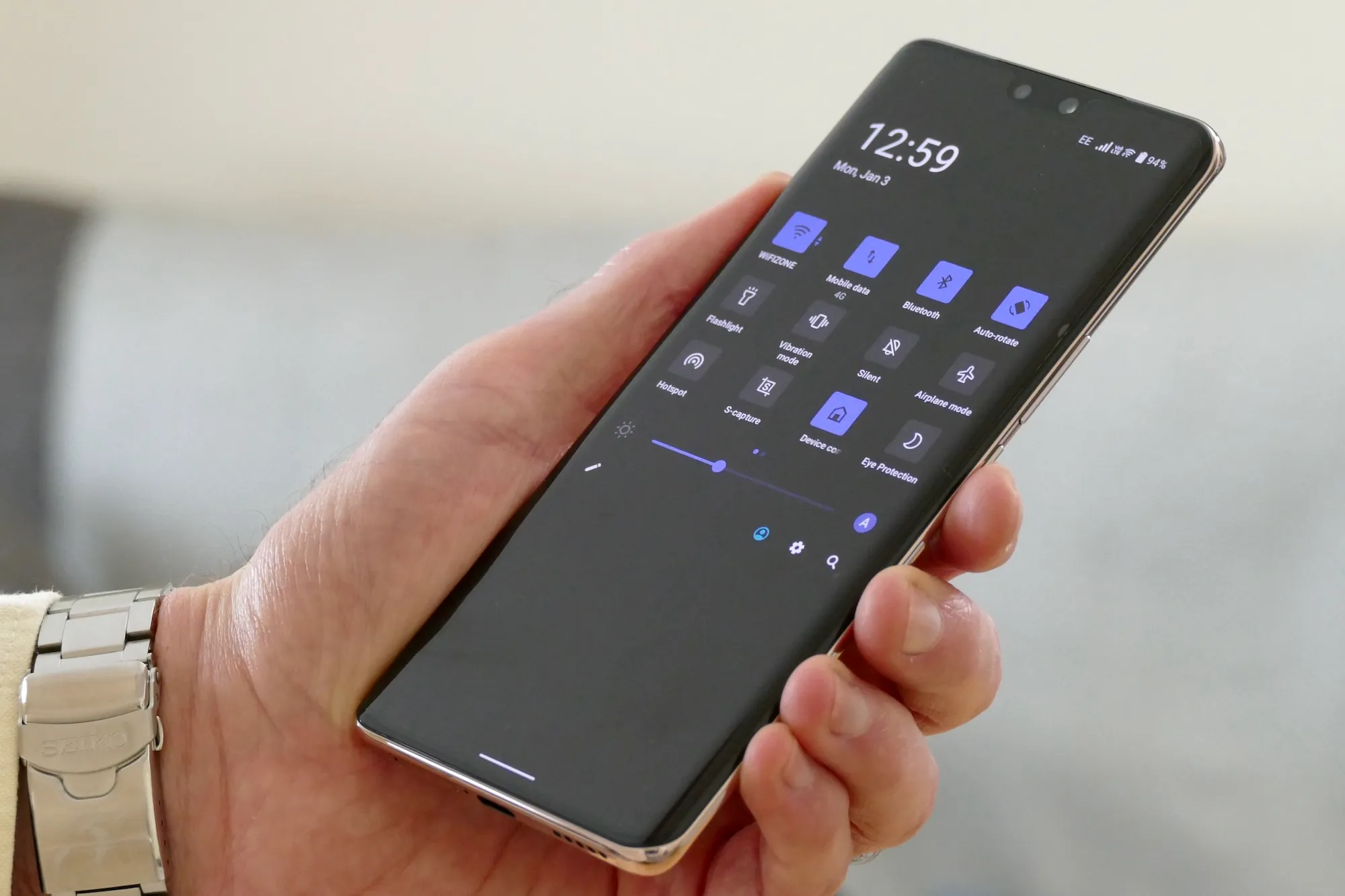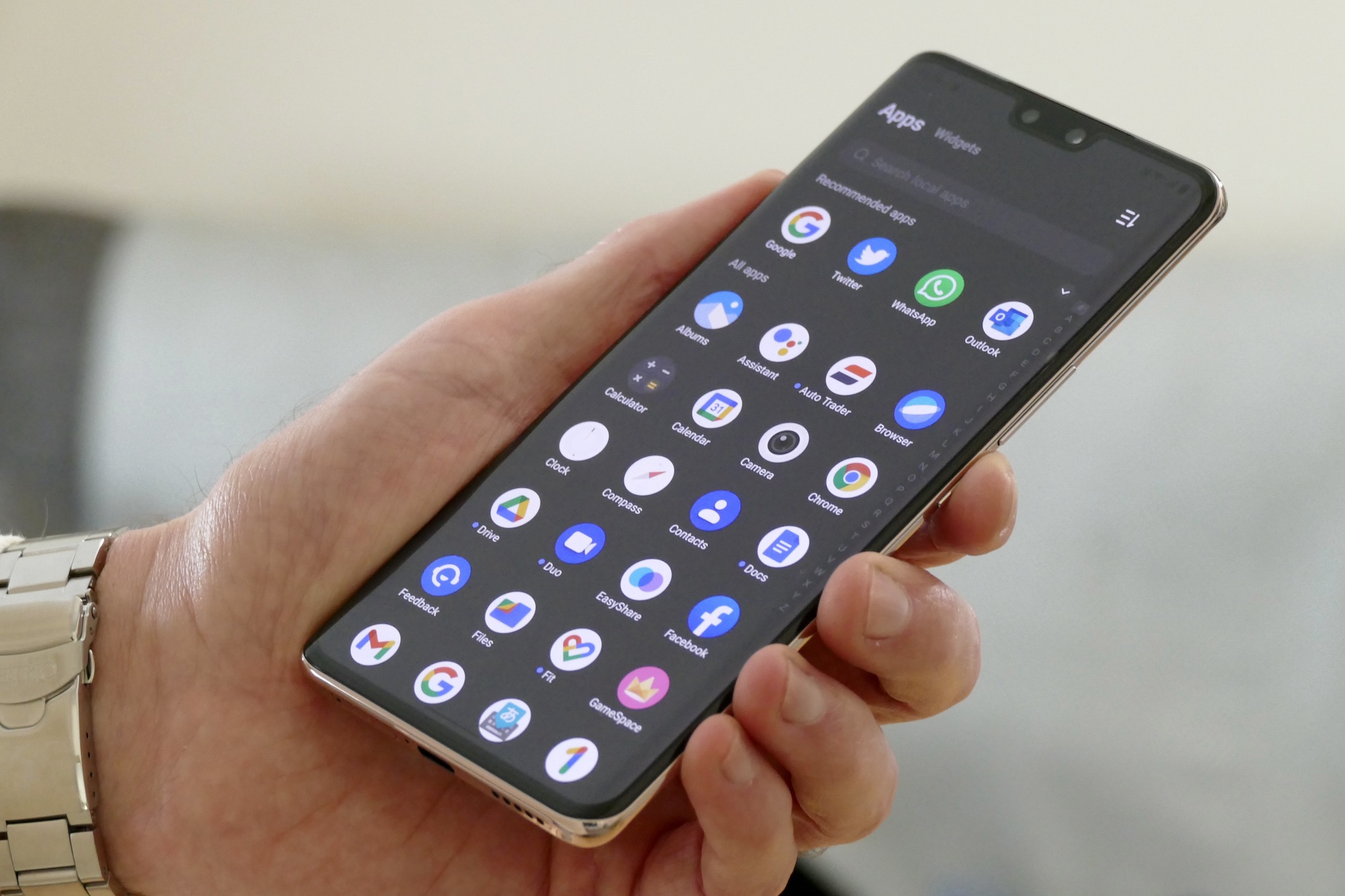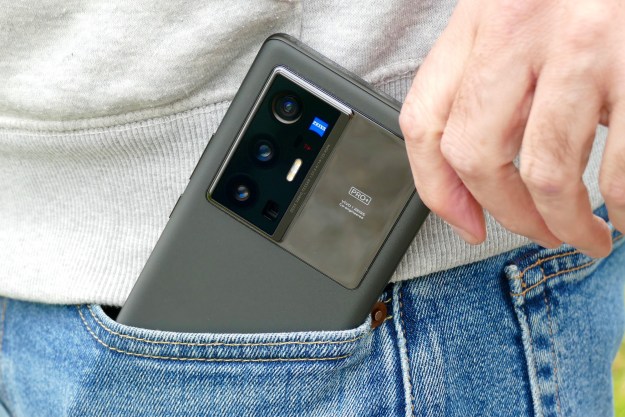Vivo’s doing something different with the new V23 Pro. Instead of focusing on the rear camera to sell the phone and building a large, heavy case around it, the phone is all about the front camera and a super thin and light body.
The otherwise relatively ordinary mid-range phone could get lost in a sea of other phones, making Vivo’s strategy gamble sound like a good idea, but it’s one we’ve seen in the past too. I’ve spent a long weekend with the V23 Pro to find out if it’s full of throwback appeal, or one for the history books.
Design
Fevered efforts to make the thinnest smartphone mostly ended as technology moved forward and larger batteries became essential, but it was a battle in which Vivo has made headlines more than once and has continued to produce super thin phones ever since. The V23 Pro is its latest, and while it’s not the thinnest ever, it’s certainly thin by modern standards, and it does a great job of making the phone stand out.

But the Vivo V23 Pro’s 7.36mm thin and light frame is also something of a throwback. You just don’t really find phones like this much today. The iPhone 13 Pro is 7.7mm thick, the Galaxy S21+ is 7.8mm, and the Galaxy S21 Ultra is 8.9mm thick, for example. It may not sound like much, but a 1mm difference makes the V23 Pro feel razor-thin in your hand, to the point of sharpness. It’s not ridiculously uncomfortable, but the heavily tapered edges do dig into your palm when you hold the phone for longer periods of time.

It’s also super light at just 171 grams, and again, it’s a callback to yesteryear, as we have got used to most modern phones coming in at around the 200-gram mark. For example, the Samsung Galaxy S21+ is 200 grams, the iPhone 13 Pro 204 grams, and even the compact OnePlus Nord 2 is 189 grams. Compared to these, you can slip the Vivo V23 Pro into your pocket and simply not notice it’s there.

Vivo says the back of the V23 Pro is made of Fluorite AG for a “velvet-like surface.” The model you see in the photos is in Sunshine Gold color, which changes color in the sunlight, according to Vivo. In the U.K., where I am, the sun has been absent for months, so I haven’t been able to properly verify this. Indoors the color does shift and shimmer, and there’s a strong sparkle infused in the finish too. It’s definitely pretty, and the tactile surface is grippy and cool to the touch.
It’s a good thing the phone is thin and light, and the Sunshine Gold color sparkles away in the light, because the rest of the V23 Pro isn’t very exciting to look at. For example, the camera module is huge, but the lens array is small, Vivo still insists on writing “Professional Photography” on the top edge of the phone, and the keys on the left side are sharp and very clicky. The V23 Pro will turn heads and does cater to an audience underserved these days.
Camera
Vivo’s pushing the V23 Pro’s front camera more than its rear camera. Inside the notch at the top of the screen is a 50-megapixel main camera and a second 8MP wide-angle camera, complete with 4K video support at 60 frames-per-second (fps), a Night mode, and software-driven features, including portrait mode.

It’s one of the few selfie cameras I’ve used that operates and performs in the same way as most rear cameras. There really is every feature you could want, and an amazing degree of customization ready to create your ideal selfie. This isn’t a camera to take a quick snap, it’s one to take your time with, and it’ll reward you with a great photo when you do.
There are multiple filters and scenes, several different bokeh effects, a comprehensive and highly personalizable beauty mode, and the option of a standard shot or a wide-angle selfie. Results are excellent, with the bokeh mode, in particular, impressing with its pin-sharp edge detection. I like the extensive editing mode too, where it’s actually quite fun to generate your ideal selfie shot. It’s not all great, though, as the Night mode smooths everything out, so it looks like you’re made of wax.
How about the rear camera? It’s led by a 108-megapixel ISOCELL HM2 camera and joined by an 8MP wide-angle and a 2MP macro camera. Like the front camera, it can shoot 4K video, plus it has a Night mode and a portrait mode. The main 108MP camera has been seen on a few different phones, including the Realme 8 Pro, and it takes good photos here. Colors are strong, there’s lots of detail, lovely natural bokeh, and the V23 Pro’s HDR mode is effective at balancing out pictures in difficult lighting.
However, the wide-angle camera is disappointing and doesn’t have the dynamic range to fully exploit its ability to capture more of a scene, but the 2x non-optical zoom setting doesn’t do a bad job of getting in closer to a subject without losing too much detail. The rear camera is about what we’d expect from a mid-range phone — acceptable provided you don’t expect much beyond the main camera — but the selfie camera elevates the V23 Pro above the competition, bringing it close to matching the Asus Zenfone 8 Flip as the best selfie phone you can get.
Performance
The Vivo V23 Pro has a MediaTek Dimensity 1200 processor inside with either 8GB or 12GB of RAM, with 128GB or 256GB storage space respectively. My review model is the 12GB/256GB version. The screen is a 6.56-inch AMOLED with a 2736 x 1080 pixel resolution and a 90Hz refresh rate. While the glass is curved, the screen barely extends down the side of the phone, and there are small bezels at the top and bottom.

Based on my experience using the V23 Pro, it’ll be worth spending a little more to get the 12GB version. Performance is decent, but it lacks the snappiness I expect from a modern smartphone, suggesting it may struggle even more with only 8GB of RAM. The slightly ponderous speed is noticeable mostly in the operating system, as playing games is fine, which makes me think it’s not due to the Dimensity 1200, but Vivo’s heavy FunTouch OS 12 interface over Android 12.
While I’m pleased to see the latest version of Android here, most of its design advantages are missing. You do get many other improvements, though, including warnings when the system uses the camera or microphone. FunTouch OS 12 is better than previous versions in terms of layout. Still, it’s packed full of pre-installed apps, is endlessly warning you about something with a notification, requires multiple terms and conditions to be agreed upon, and puts ads in the search feature. It never feels friendly or fun, despite the name.
The screen is sharp and responsive, but I’ve had it at maximum brightness most of the time as otherwise, it’s a little dull to look at, and it doesn’t automatically adjust very effectively. The battery has a modest 4,300mAh capacity, and provided you don’t push it hard with games or video, the Dimensity 1200’s efficiency seems to help it operate for about 36 hours, or a full day and a half. Add in an hour of gaming and YouTube videos, and expect it to lose 10% in one go.
Finally, the face recognition is fast, but the fingerprint sensor under the screen is not as accurate as I’d like and often requires several tries before it unlocks the phone, which means you will be forced to use your PIN or pattern more often.
Has the strategy paid off?
Has Vivo’s different approach to the V32 Pro paid off? Somewhat, yes. Few people will say, “I wish my phone was heavier,” but top-grade rear cameras are always going to appeal to more people. The Vivo V23 Pro’s front camera is certainly very good, but the rear camera is lacking, so you’re really going to have to take a lot of selfies for it to make sense. The thin and light case is welcome, but outside of the sparkly color, it’s not very exciting to look at.
Vivo hasn’t provided price details at the time of writing, but it’s likely to go up against a wealth of mid-range smartphones, with the Google Pixel 6, iPhone 13, Samsung Galaxy A52 5G, and many others vying for your attention. Vivo does not sell its phones in the U.S. but is expanding its presence into Europe, alongside its usual markets in Asia and India.
If you’re really into selfies, you’ll get plenty of value from the Vivo V23 Pro, and anyone sick of heavy, brick-like phones will really like the size and weight of the phone. However, as an all-rounder, it can’t quite compete with phones that concentrate on rear camera performance, and make the best out of the size trade-offs the additional lenses and larger battery bring.
Editors' Recommendations
- This phone just ruined the iPhone 14 Pro and Samung Galaxy S23 Ultra for me
- We have the Vivo X90 Pro, one of 2023’s most interesting Android phones
- Vivo’s V23 5G looks quite a lot like the iPhone 13
- Realme GT 2 Pro has the world’s first 150-degree wide-angle camera on a phone
- Vivo S12 and S12 Pro promise studio-grade selfies thanks to color-changing LEDs




















